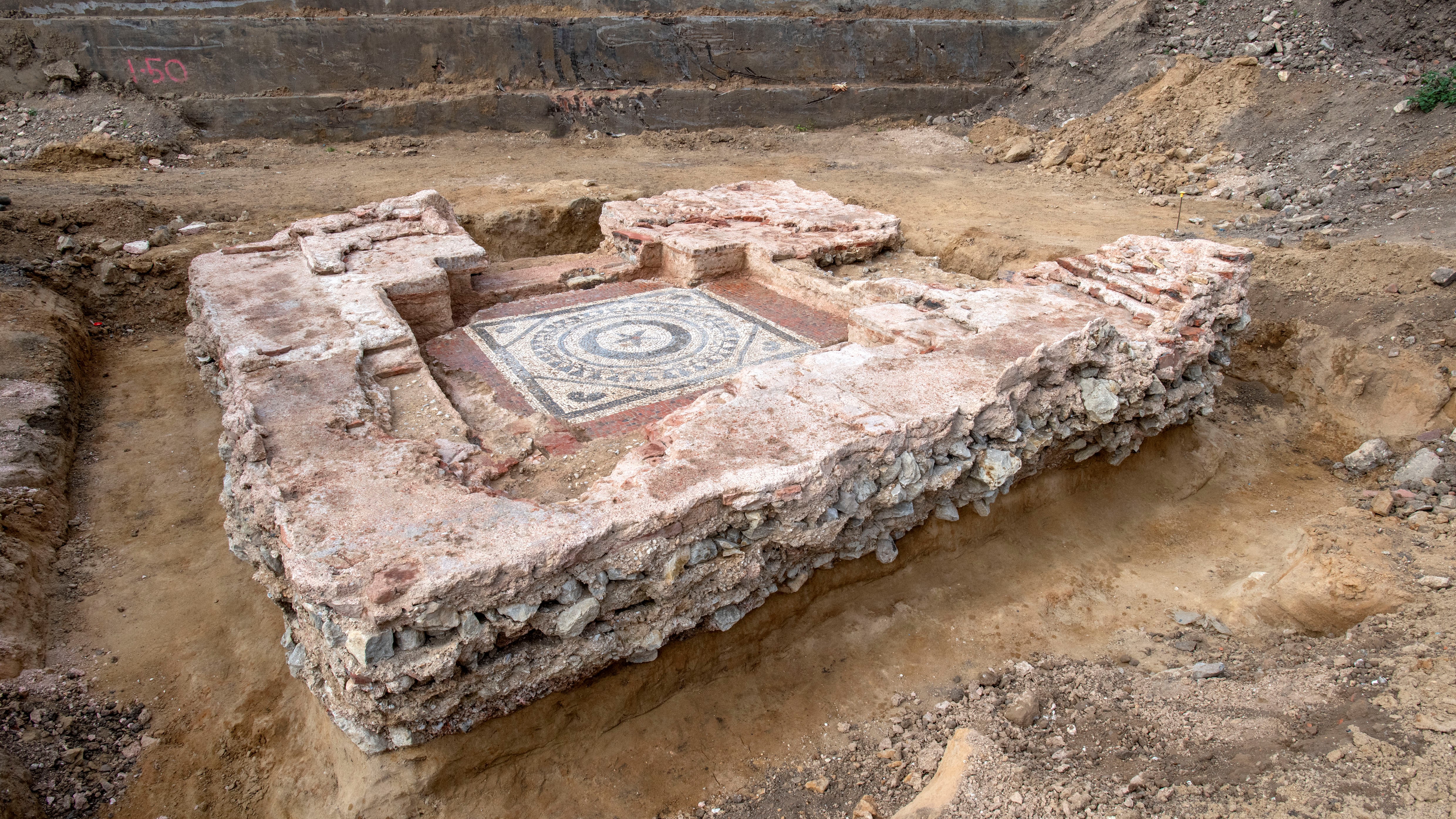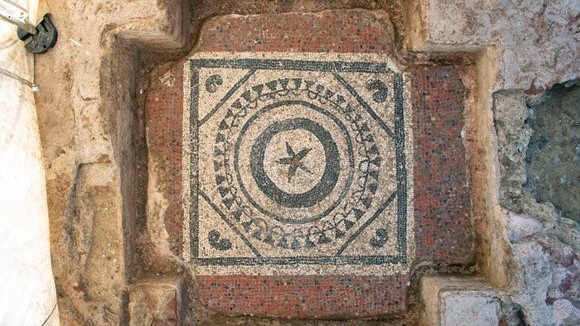'Completely unique' Roman mausoleum discovered in rubble of London building site
No burial artifacts were recovered from the structure itself, but the surrounding area yielded over 80 Roman burials containing copper bracelets, coins, glass beads and a bone comb.
A "completely unique," 2,000-year-old Roman mausoleum that has emerged from the rubble of a development site in central London is the most intact ever discovered in the U.K.
The monumental tomb — of which low walls, entrance steps and interior flooring remain — is bejeweled with two mosaics composed of small red tiles, each featuring a flower enclosed in concentric circles. More than 100 coins were also strewn across the tomb's floor.
Archeologists only found the second mosaic when they dug beneath the first one. This indicates the mausoleum floor was raised at least once while it was still being used for burials, they said.
The discovery, which is nestled within the city's central Southwark area, "provides a fascinating window into the living conditions and lifestyle in this part of the city in the Roman period," Antonietta Lerz, a senior archeologist at The Museum of London Archeology (MOLA), said in a statement.
Related: Ancient necropolis unearthed just feet away from bustling Paris train station
A video reconstruction of the mausoleum's interior reveals how the tomb may have been laid out and decorated during Roman times.
Roman invaders under Emperor Claudius founded London, or Londinium, around 47 A.D. and ruled the city through to the early fifth century, when dwindling military resources and incursions across the rest of the empire forced their withdrawal from Britain.
Get the world’s most fascinating discoveries delivered straight to your inbox.
The recent excavation bears the marks of this decline. "This relatively small site in Southwark is a microcosm for the changing fortunes of Roman London — from the early phase of the site where London expands and the area has lavishly decorated Roman buildings, all the way through to the later Roman period when the settlement shrinks and it becomes a more quiet space where people remember their dead," Lerz said.
The mausoleum would have originally housed coffins and other burial artifacts, according to the statement, but none were recovered from the structure itself. However, the excavation site around the monument yielded Roman-era items belonging to more than 80 burials, including copper bracelets, glass beads, pottery and a bone comb.
Archeologists will now examine these recovered items to better understand central London's Roman past.
Only the wealthier members of society would have had access to the mausoleum, which may have been used as a family tomb or belonged to a "burial club," requiring a monthly fee to secure a future grave, according to the statement.
What remains of the structure indicates that it was a two-story building with large buttresses in the corners for support. The high walls were probably dismantled for reuse elsewhere during the medieval period. Inside, a raised platform cemented with pink mortar containing crushed bits of pottery and brick — a widely used Roman building material known as "opus signinum" — designates where the burials would have taken place around three sides of the mausoleum.
The discovery follows that of a 26 foot (eight meter) long Roman mosaic — the largest unearthed in London for more than 50 years — in February 2022. The newly excavated mausoleum will be put on public display once construction has concluded, according to the statement.

Sascha is a U.K.-based staff writer at Live Science. She holds a bachelor’s degree in biology from the University of Southampton in England and a master’s degree in science communication from Imperial College London. Her work has appeared in The Guardian and the health website Zoe. Besides writing, she enjoys playing tennis, bread-making and browsing second-hand shops for hidden gems.






